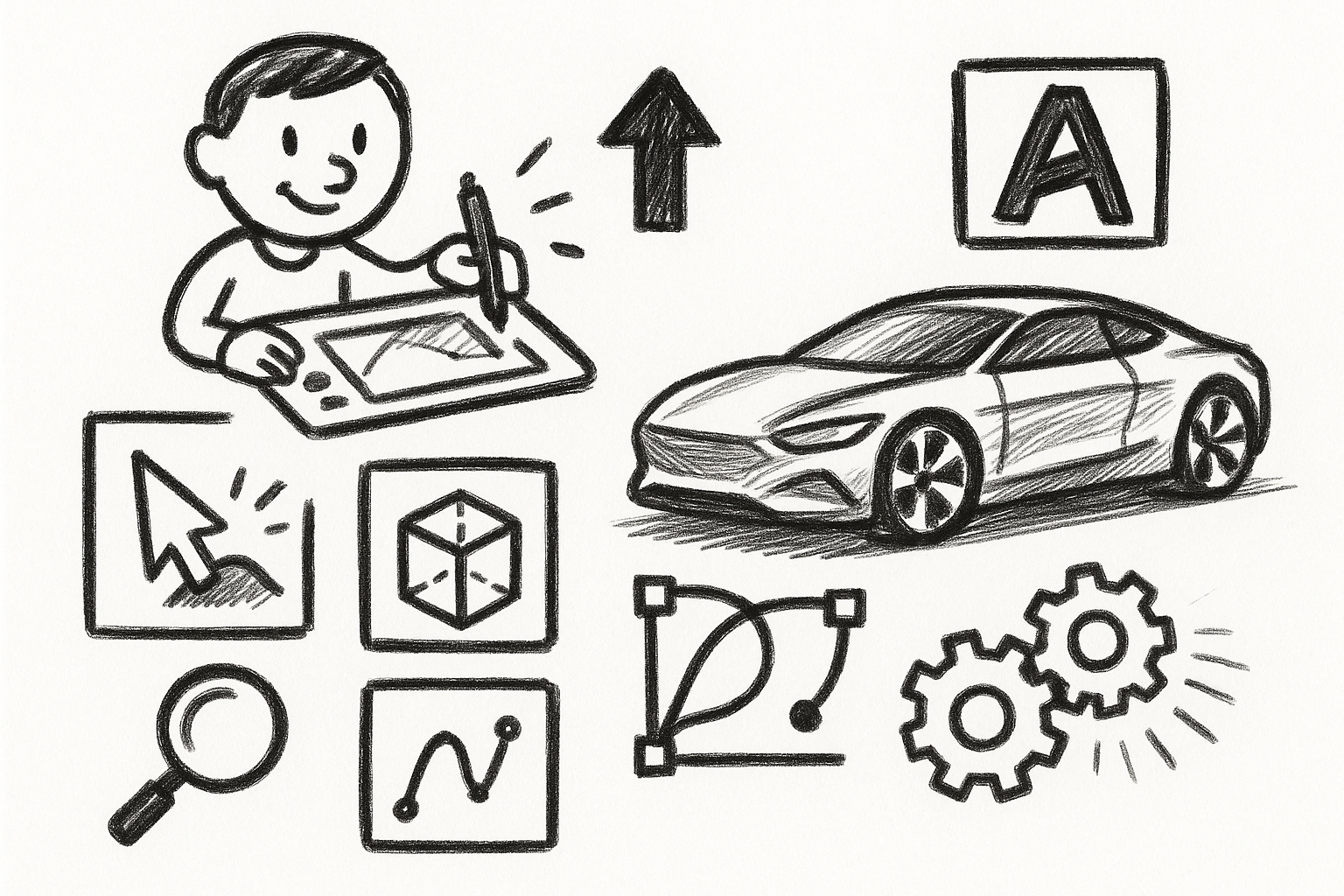Your Cart is Empty
Customer Testimonials
-
"Great customer service. The folks at Novedge were super helpful in navigating a somewhat complicated order including software upgrades and serial numbers in various stages of inactivity. They were friendly and helpful throughout the process.."
Ruben Ruckmark
"Quick & very helpful. We have been using Novedge for years and are very happy with their quick service when we need to make a purchase and excellent support resolving any issues."
Will Woodson
"Scott is the best. He reminds me about subscriptions dates, guides me in the correct direction for updates. He always responds promptly to me. He is literally the reason I continue to work with Novedge and will do so in the future."
Edward Mchugh
"Calvin Lok is “the man”. After my purchase of Sketchup 2021, he called me and provided step-by-step instructions to ease me through difficulties I was having with the setup of my new software."
Mike Borzage
Harnessing Edge AI for Enhanced Design Software Performance and Security
October 15, 2024 5 min read


Introduction to Edge AI in the Context of Design Software
Edge Artificial Intelligence (AI) represents a significant shift in computational paradigms, bringing intelligent data processing closer to the source of data generation. Unlike traditional AI systems that rely heavily on cloud computing, Edge AI processes data on local devices or "edges" of the network. This approach minimizes dependency on centralized servers, enabling faster processing times and enhancing data privacy. In the realm of design software, the integration of Edge AI marks a transformative advancement. As designers increasingly demand immediate feedback and more responsive tools, on-device intelligence becomes crucial. Edge AI empowers design applications to perform complex computations locally, facilitating real-time adjustments and optimizations without the latency associated with cloud-based processing. The current state of design software often involves significant delays due to data transmission and remote processing. This not only hampers efficiency but also affects the creative flow of designers. There is a compelling need for more efficient, responsive tools that can keep pace with the rapid iteration cycles inherent in modern design workflows. Edge AI addresses these challenges by providing a framework for on-device processing, thereby enhancing the overall user experience and productivity in design applications.
Benefits of Edge AI in Design Software
Real-Time Processing
One of the most profound advantages of integrating Edge AI into design software is the capability for real-time processing. By enabling immediate data handling and analysis directly on the device, designers can receive instant feedback on their work. This immediacy allows for swift iterations and fine-tuning of designs without the delays caused by data transmission to external servers. In practical terms, this means features like real-time rendering become significantly more efficient. Designers can adjust parameters and immediately see the impact of those changes, enhancing their ability to experiment and innovate. For example, adjusting lighting in a 3D model or tweaking material properties can be processed instantaneously, providing a seamless and interactive design experience. This level of responsiveness is pivotal in maintaining the creative momentum and can lead to more refined and higher-quality outcomes.
Reduced Latency and Improved Performance
Edge AI significantly reduces reliance on cloud processing, which in turn minimizes latency issues commonly experienced in design software. By handling computations locally, the time taken for data to travel back and forth between the client and server is eliminated, leading to faster decision-making processes. This improvement not only enhances the user experience but also contributes to increased efficiency in project workflows. Several leading design software platforms have begun integrating Edge AI to capitalize on these benefits. For instance, applications now utilize on-device intelligence to optimize rendering times and allow for smoother manipulation of complex models. These enhancements contribute to a more fluid user interaction, enabling designers to focus on creativity rather than technical limitations.
Increased Privacy and Security
Local data processing through Edge AI offers substantial advantages in terms of user privacy and security. By keeping sensitive information on the device rather than transmitting it over networks, the risk of data breaches or unauthorized access is significantly reduced. This aspect is particularly crucial in design workflows where intellectual property must be safeguarded. Protecting proprietary designs and confidential project details is paramount for organizations and individual designers alike. Edge AI supports secure design workflows by ensuring that critical data remains within the confines of the user's hardware. This approach not only mitigates potential security threats but also builds trust with clients and stakeholders who are increasingly concerned about data protection.
Challenges and Considerations for Edge AI Integration
Hardware Limitations
While Edge AI presents numerous benefits, its integration into design software is not without challenges. One primary consideration is the hardware requirements necessary for effective utilization. Devices must possess sufficient computational power, memory, and specialized processing units to handle the demanding tasks associated with AI computations locally. Many existing devices used in design contexts may not meet these requirements, necessitating upgrades or investments in new hardware. Additionally, design software must evolve to efficiently leverage these hardware capabilities. This may involve optimizing applications to utilize parallel processing, leveraging Graphics Processing Units (GPUs), or integrating dedicated AI chips. Developers need to address these potential constraints to ensure that Edge AI enhancements are accessible and do not create barriers due to hardware limitations.
Interoperability Issues
Integrating Edge AI capabilities within established design software ecosystems poses challenges related to interoperability. Existing applications and tools may not be readily compatible with new AI functionalities, leading to potential disruptions in workflows. There is a pressing need for the development of standards and frameworks that facilitate compatibility between Edge AI technologies and current software solutions. This includes creating APIs and modules that seamlessly integrate with various platforms, allowing for consistent performance across different systems. Without such standards, the full potential of Edge AI in design may be hindered by fragmented adoption and inconsistent user experiences.
User Adoption and Training
The introduction of Edge AI features into design software necessitates a consideration of the user experience and potential learning curve. Designers accustomed to traditional tools may require training to fully leverage on-device intelligence. This involves not only understanding new functionalities but also adapting to changes in workflow processes. Strategies for facilitating this transition include developing intuitive user interfaces, providing comprehensive training resources, and offering support during the adoption phase. By addressing these aspects, organizations can ensure that designers are equipped to utilize Edge AI effectively, maximizing the benefits of on-device intelligence in their work.
Future Prospects and Innovations in Edge AI for Design Software
Emerging Trends
The future of Edge AI in design software is promising, with anticipated advancements in both hardware and software poised to facilitate its widespread use. Developments in semiconductor technologies and the proliferation of devices equipped with AI-specific processors will make on-device intelligence more accessible. Additionally, improvements in machine learning algorithms optimized for edge computing will enhance performance and efficiency. The potential for AI-enhanced tools to revolutionize design processes is substantial. These tools could automate routine tasks, provide intelligent suggestions, and enable more complex simulations to be performed in real-time. As these technologies mature, designers will be able to push creative boundaries further, supported by powerful, responsive tools that enhance their capabilities.
Collaborative Design with Edge AI
Edge AI opens up new possibilities for real-time collaboration across design teams. By processing data locally, team members can work simultaneously on shared projects without the bottleneck of server-based coordination. This capability supports multidisciplinary applications in architecture, engineering, and product design, where seamless collaboration is crucial. For example, architects and engineers can integrate their workflows, adjusting structural elements and immediately seeing the impact on architectural designs. Edge AI can manage the synchronization of changes and ensure consistency across different aspects of the project. This collaborative approach enhances efficiency and fosters innovation through collective input.
Conclusion
In summary, Edge AI represents a transformative advancement in design software, offering significant enhancements in efficiency, privacy, and user experience. By enabling on-device intelligence, it addresses current limitations related to latency, security, and responsiveness. The integration of Edge AI has the potential to revolutionize design workflows, providing designers with powerful tools that enhance creativity and productivity. Ongoing collaboration between software developers and design professionals is essential to fully harness these benefits. By working together, they can ensure that Edge AI technologies are effectively integrated, user-friendly, and aligned with the needs of the design community. It is imperative for practitioners to consider the implications of Edge AI on their processes and stay informed about technological advancements. Embracing these innovations will position them at the forefront of the industry, ready to leverage the full potential of on-device intelligence.
Also in Design News

Mastering Precision: 5 Advanced Techniques to Elevate Your Autodesk Alias Workflow
August 29, 2025 5 min read
Read More
Rhino 3D Tip: Optimizing Rhino Workflow Through Strategic Plugin Integration
August 29, 2025 3 min read
Read More
Harnessing Edge Computing to Transform Design Software Workflows
August 29, 2025 12 min read
Read MoreSubscribe
Sign up to get the latest on sales, new releases and more …


